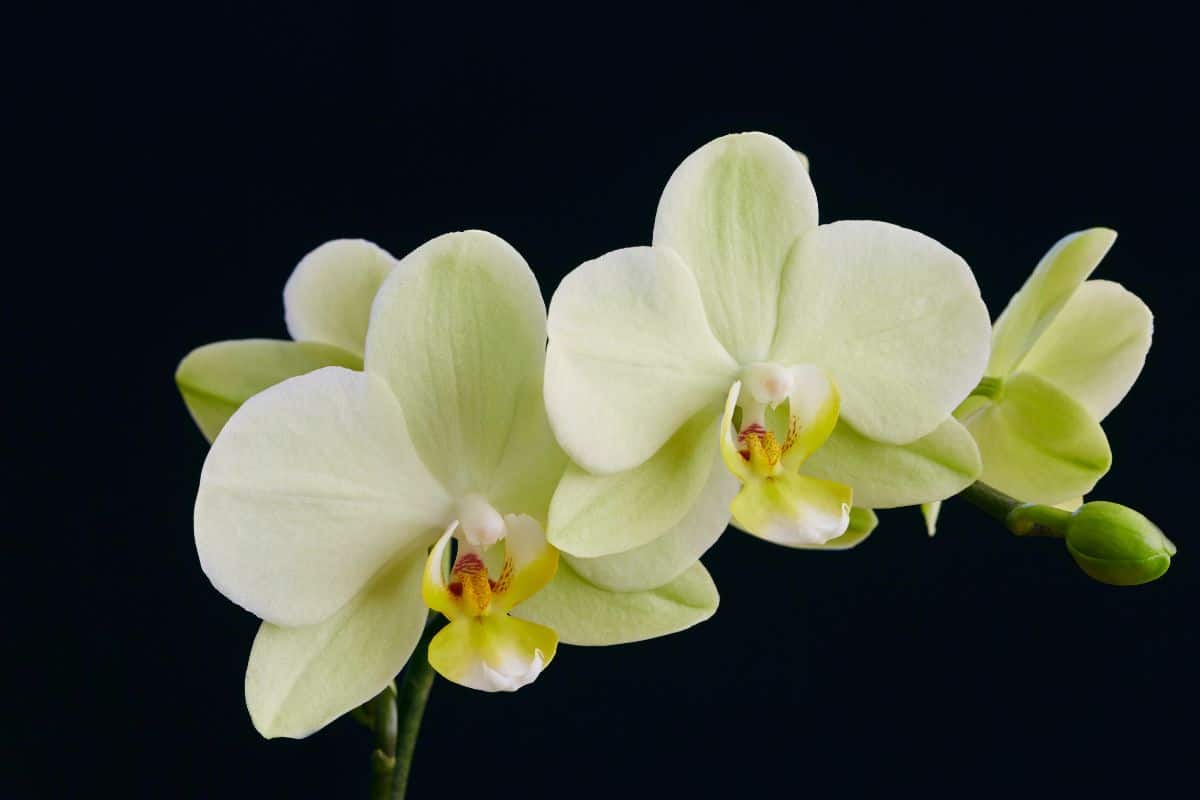Moth orchids, or Phalaenopsis, have become increasingly popular houseplants due to their stunning blooms and relatively straightforward care requirements. These elegant flowering plants can thrive indoors for years with proper attention. Unlike some office plants that brighten up workspaces, moth orchids require specific conditions to flourish. This guide will walk you through everything you need to know about caring for these beautiful tropical plants.
Understanding moth orchid basics
Moth orchids (Phalaenopsis) are epiphytic plants native to tropical Asia, Australia, and parts of the Pacific Islands. In their natural habitat, these orchids grow attached to trees rather than in soil. This fundamental characteristic explains why conventional potting methods often fail with these plants.
Phalaenopsis orchids are among the easiest orchids to grow at home, making them perfect for beginners. Their flowers typically last for 2-3 months, with proper care extending their blooming period. Available in countless colors and patterns, these orchids have become fixtures in homes worldwide.
Unlike many houseplants, moth orchids have aerial roots designed to absorb moisture and nutrients from the air. Their thick, leathery leaves store water, helping them survive periods of drought. Understanding these botanical adaptations is crucial for providing appropriate care.
Most commercial moth orchids come potted in specialized orchid mix rather than standard potting soil. This mix typically contains bark chips, sphagnum moss, and other materials that provide the drainage and airflow these plants require. Similar to how basil plants need specific growing conditions, orchids thrive when their natural habitat is mimicked.
Creating the perfect environment
Moth orchids prefer bright, indirect light. Direct sunlight can burn their leaves, while insufficient light prevents flowering. An east-facing window often provides ideal lighting conditions. If using a south or west-facing window, diffuse the light with a sheer curtain to prevent leaf burn.
Temperature plays a significant role in orchid care. Phalaenopsis prefer daytime temperatures between 70-85°F (21-29°C) and nighttime temperatures between 60-70°F (15-21°C). This slight temperature drop at night often triggers blooming. Avoid placing orchids near drafty windows or heating/cooling vents that cause temperature fluctuations.
Humidity levels between 50-70% create optimal growing conditions for moth orchids. Most homes have lower humidity levels, especially during winter months. Increase humidity by:
- Placing orchids on humidity trays (saucers filled with pebbles and water)
- Grouping plants together to create a microclimate
- Using a humidifier near your orchid collection
- Misting occasionally (though this provides only temporary humidity)
Air circulation prevents fungal and bacterial problems. A gentle fan or naturally ventilated room helps maintain orchid health without creating harmful drafts. Unlike fall garden flowers that thrive outdoors, indoor orchids need our help maintaining appropriate airflow.
Watering and feeding techniques
Improper watering causes most moth orchid deaths. These plants prefer to dry out slightly between waterings. Overwatering leads to root rot, while underwatering causes dehydration and stunted growth. The watering frequency depends on various factors including pot size, growing medium, humidity, and season.
The ice cube method (placing ice cubes on the growing medium) has gained popularity, but many experts advise against it. This technique can shock tropical plants accustomed to warm environments. Instead, water thoroughly when the potting medium feels dry to the touch, typically every 7-10 days.
When watering, use room temperature water and allow it to flow through the pot completely. This technique flushes out salt buildup from fertilizers. After watering, never leave orchids sitting in water, as this promotes root rot. Wait until the growing medium is nearly dry before watering again.
Fertilizing provides essential nutrients for growth and flowering. Use a balanced orchid fertilizer diluted to one-quarter or one-half the recommended strength. Apply every two weeks during growing season, and monthly during dormancy. Similar to how basil requires proper feeding for optimal growth, orchids need appropriate nutrition.
The “weakly, weekly” approach works well for many orchid enthusiasts. This involves applying very dilute fertilizer with each watering rather than stronger solutions less frequently. Flush the potting medium thoroughly once monthly to prevent fertilizer salt buildup.
Maintenance and troubleshooting
Repotting becomes necessary when the growing medium breaks down (typically every 1-2 years). Signs that repotting is needed include:
- Roots growing out of the pot or drainage holes
- Decomposing potting medium that retains too much moisture
- Roots appearing brown and mushy rather than silvery-green
- Declining plant health despite proper care
Repot in specialized orchid mix, never regular potting soil. The best time to repot is after flowering when new growth begins. Trim away any dead or rotting roots with sterilized scissors before placing in fresh medium.
Yellow leaves might indicate either natural aging or a care problem. Lower leaves naturally yellow and drop every few years. However, if multiple leaves yellow simultaneously, check for watering issues, temperature extremes, or pests.
Pest problems include spider mites, scale insects, and mealybugs. Treat infestations promptly with insecticidal soap, neem oil, or rubbing alcohol applied with cotton swabs. Regular inspection helps catch problems early before they threaten plant health.
After flowering, cut the flower spike just above a node (visible joint) if it remains green. This often prompts another round of blooming. If the spike turns brown, cut it at the base. Some growers incorporate leafy greens in their plant collection alongside orchids for visual contrast and to maximize growing space.
With proper care, moth orchids can rebloom year after year, providing endless enjoyment. These resilient plants reward patience and attention with spectacular blooms that brighten any indoor space. Their minimal care requirements make them perfect additions to any plant collection, from beginners to experienced enthusiasts.

